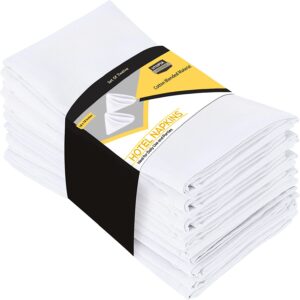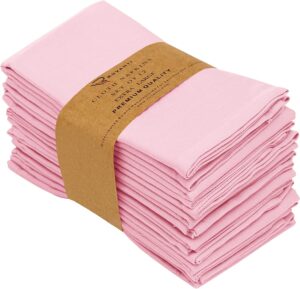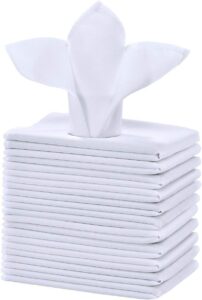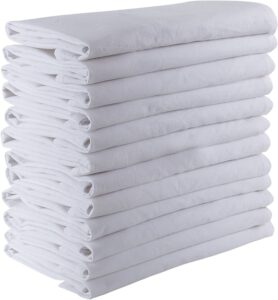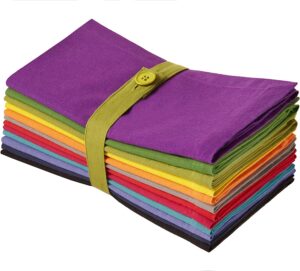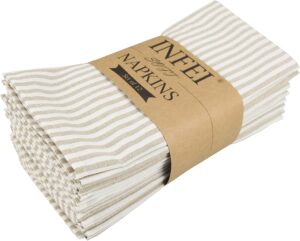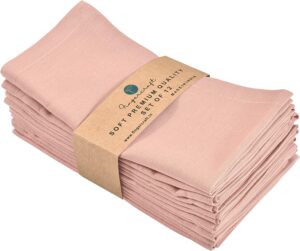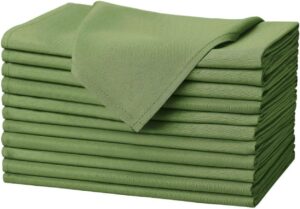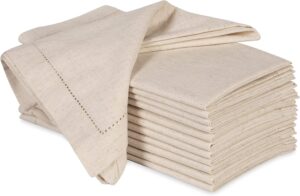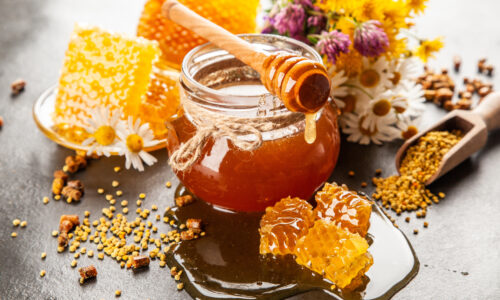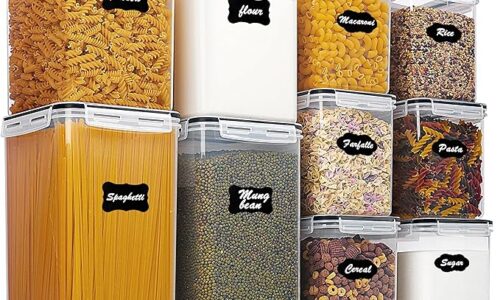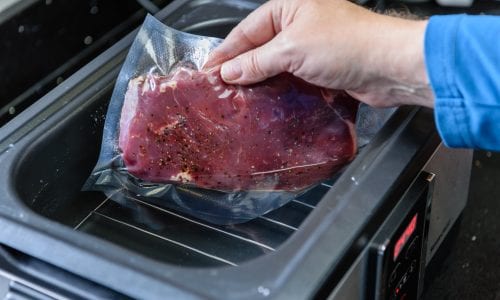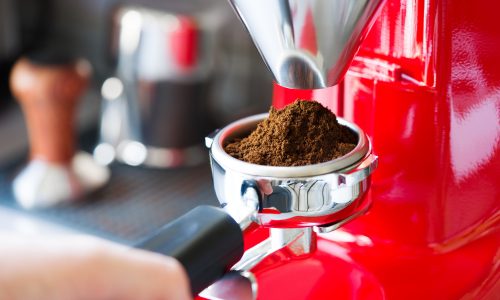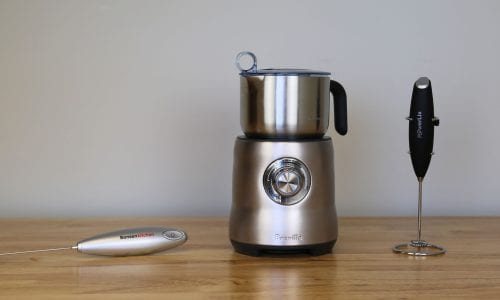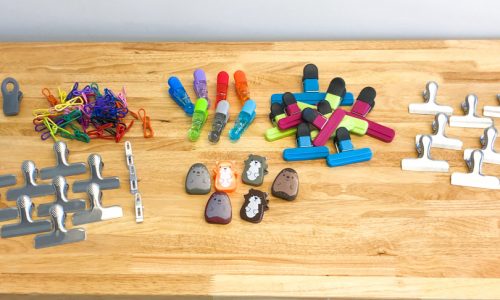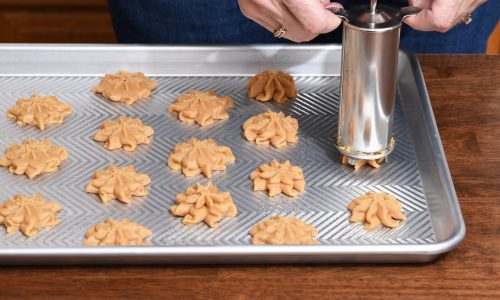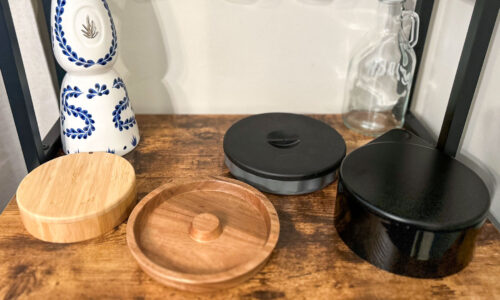The Best Cloth Napkins
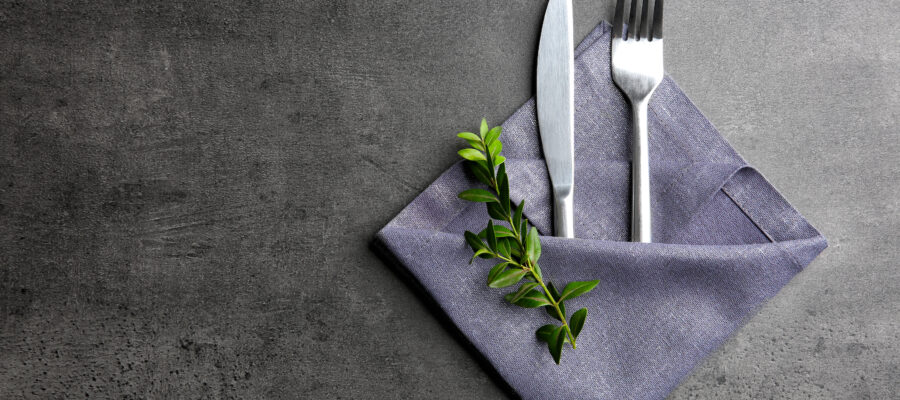
Our Review Process
Don't Waste Your Money is focused on helping you make the best purchasing decision. Our team of experts spends hundreds of hours analyzing, testing, and researching products so you don't have to. Learn more.
Our Picks For The Top Cloth Napkins
- 1. Utopia Kitchen Wrinkle-Resistant Poly Cotton Cloth Napkins, 12-Count
- 2. Ruvanti Machine Washable Cotton Blend Cloth Napkins, 12-Count
- 3. Cieltown Stain-Resistant Polyester Cloth Napkins, 12-Count
- 4. DG Collections Lint-Free Cotton Flour Sack Cloth Napkins, 16-Count
- 5. COTTON CRAFT Eco-Friendly Washable Cotton Cloth Napkins, 12-Count
- 6. PLOYMONO Shrink-Resistant Polyester Cloth Napkins, 8-Count
- 7. INFEI Striped Design Machine Washable Cloth Napkins, 12-Count
- 8. FINGERCRAFT Mitered Corners Cotton Linen Cloth Napkins, 12-Count
- 9. TALVANIA Soft Cotton Polyester Blend Cloth Napkins, 12-Count
- 10. Ramanta Home Oversized Cotton Flax Cloth Napkins, 12-Count
You’ll get 12 napkins in this set, each measuring 18” x 18”. The material is 60 percent cotton and 40 percent polyester, making them absorbent and quick drying without sacrificing quality. The hem is carefully sewn to ensure it will hold up over many uses.
Super LuxuriousThe cotton-polyester blend of these napkins makes them feel like the napkins found at luxury hotels.
Measuring 18” x 18”, this set of 12 cloth napkins is versatile enough to work for a variety of occasions. Cotton-enriched polyester gives these napkins both softness and durability to ensure they hold up even with regular use and washing. There are 26 different color options, including a multicolor option that gives you plenty of variety.
Multiple Color OptionsChoose the color that matches your design scheme with this set of 12 cloth napkins.
High-grade polyester makes these napkins both versatile and durable. You’ll get 12 17” x 17” napkins in each set, and you can choose from 17 color options. The hemmed edges are folded over, giving it a unique, elegant look.
Extra DurableMade from high-grade polyester with folded-over hemmed edges, this napkin is built for durability.
If you’re looking for an eco-friendly option, consider this set of 16 12” x 12” napkins, which is made from 100 percent cotton. Each napkin is prewashed and free of lint to give it a multipurpose design. You can choose from multiple sizes and colors to find the right napkin set to fit your needs.
Versatile UsesThe 100 percent cotton material of these napkins makes them versatile enough to use for napkins, washing windows, embroidery and more.
Buying Guide
Reducing paper use is not only better for the environment, but it also saves money. In the U.S. alone, more than 13 billion pounds of paper towels are used each year. That use destroys about 110 million trees while also using 130 billion gallons of water.
Cloth is a great alternative to that. Yes, you’ll need to wash your cloth towels and napkins between uses, but the water and electricity used to do all that still don’t come close to the environmental impact of paper towel manufacturing. Additionally, cloth doesn’t end up in landfills as paper does, so you reduce your environmental impact there, as well.
For many consumers, though, cloth napkins become a household item saved for more formal occasions. But cloth can be a great option for everyday use. Instead of reaching for paper towels or paper napkins, you can use your cloth for every meal and toss it in the washer as it gets soiled.
But when you’re looking for cloth napkins, there are some things to consider. Linen may have been a go-to fabric for napkins and tablecloths in the past, but in recent years, polyester and cotton have taken over. You can find cotton-polyester blends that combine the softness of cotton with the durability of polyester.
Cloth napkins come in a variety of colors, so you can easily find an option that expresses your unique style. They come in neutral whites and blacks, of course, but there are also bold, vivid colors and light pastels. Darker colors might better disguise the stains, but lighter colors are less vulnerable to fading over time.
Care is an important part of any napkin you choose. Most can be tossed in the wash, but you may need to wash them on cold and tumble dry on low. Line drying is also an option if you have the space to hang your napkins. Some napkins are prewashed, keeping you from worrying about the shrinking that can occur the first time you wash them.
What to Look For
- The nature of napkins makes them tough to keep in good shape. You’ll likely be soiling them with each use. It’s important not to let those stains set in, though. Pretreating your napkins with an enzyme-based solution or undiluted laundry detergent can help keep those stains from becoming permanent.
- Napkins are typically sold in multipack sets. If you opt for a set of 12 or 16, you’ll have plenty to cover larger dinner parties. However, even if you’re looking for an everyday solution, a set of 12 or more will give you some spares to use while the others are in the wash.
- Durability should be a top priority for cloth napkins you’ll use frequently. You’ll want to pay particular attention to the hem, making sure the stitching is strong enough to withstand multiple uses and washings. Also, go for a napkin made from stronger material to ensure it will last over many years.
- If you’re concerned about eco-friendliness, you might consider using each napkin multiple times before washing. One downside to this, though, is that it can allow stains to set in, making them tougher to clean.
- One downside to cloth napkins is that you’ll need a place to store them between uses. You’ll need a drawer or cabinet that’s easy to access while you’re setting the table while still being out of the way. Some families keep their cloth napkins on the table between uses, assuming they don’t wash them after each meal.
- A fabric softener sheet toward the end of your napkins’ dryer cycle can act to coat the surface of the material. This will help prevent stains from setting into the fabric the next time you use it.
- If you have a tough time getting stains out of your white napkins, a little bleach can go a long way. A bleach pen could provide the amount you need. Too much bleach can damage the material.
More to Explore
Napkins have been around throughout history, going all the way back to Ancient Greece. In fact, the very first napkins were edible. They were made from a type of dough called apomagdalia. Ancient Greeks used the dough to wipe their fingers when they got messy during meals.
Ancient Romans turned toward cloth for after-meal cleanup. They used two types of material for their napkins: the sudarium and the mappa. The sudarium was a sweat cloth, which was also used for wiping the brow while working in the heat. The mappa was a much larger cloth that could be draped over themselves while they reclined during meals.

